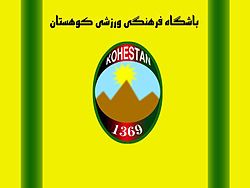This article needs additional citations for verification .(October 2014) |
The topic of this article may not meet Wikipedia's general notability guideline .(August 2025) |
 | |||
| Full name | Kohistan Football Club Herat | ||
|---|---|---|---|
| Nicknames | Talahi Poshane Kohistan (The Yellow Submarine) | ||
| Founded | 25 January 1990 | ||
| Ground | Herat Stadium Herat Afghanistan | ||
| Capacity | 15,000 | ||
| League | Herat Premier League | ||
Kohistan Football Club Herat Is a football club based in Herat City of Afghanistan which plays in Herat Premier League
